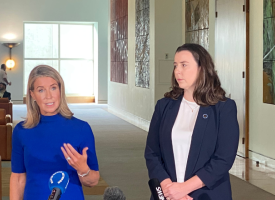Good Chat
Communication! So often, it’s the doctor-in-training’s downfall! You know all the old clichés, don’t you? It never happened if it wasn’t documented in the patient notes, research never happened unless it was published, and so on. Truth is, your day to day job is so busy that documentation and communication often don’t get the time and detail that they need.
So when you get a group of passionate doctors-in-training together to talk about issues like workforce, equal opportunity, better standards for residents, flexible work arrangements… is it any surprise that we just don’t communicate our work that well? One of the things we talked about at our recent Council of Doctors in Training meeting was communication. Every time we have a CDT meeting, I get to meet some of the most passionate doctors-in-training in Australia. We work on things that are crucial to the profession and with each meeting, our work advances just that bit further. But we’ve never been great at communicating this work back to the membership. When I’m asked the question “why should I join the AMA?” I often wish for a Matrix moment, where I could just plug you in and you could see the work that gets done behind the e-mails and the media. Our advocacy is our strength; our communication of that advocacy needs to catch up.

This last month has been a furiously busy one for the AMA Council of Doctors in Training. We’ve completely reformed our positions statements on pre-vocational medical education and training, with a view that all pre-vocational training should be accredited and not just internship. We’ve done the last bits of work on our Safe Hours Audit, with a view to run the national audit in September, helping to shine a light on unsafe rostering practices across Australia. We’ve finalised our National Code of Practice on flexible working arrangements, to help employers and doctors take part-time employment from a good idea to a practical, implemented idea. We’ve started to ramp up work on helping to support Indigenous trainees through to fellowship. The list goes on.
CDT is made up of twelve people, with broad geographical representation. At each meeting, we also invite training representatives from the colleges and from other important stakeholder groups. In between our three face-to-face meetings a year, we work on projects and strategies with working groups. It’s a pretty busy calendar. The avenues for communication back to you, dear reader, are mostly through your State AMA doctor-in-training committees and columns such as this one. That’s not enough, and we want to change it. You can’t talk to almost 30,000 people through 12. It just doesn’t work.
To that end, we’re currently reviewing our communication strategy, and we’re remembering that communication is a two way street. We want to help members engage with the AMA as well as getting information back to them. We’re changing the way we make up our working groups on major issues so that you don’t have to be “on CDT” to help and drive AMA policy. We’re changing the way we communicate Federal work to State committees, so that those with an interest in issues can still keep informed on a regular basis. We’re working on our social media presence to make it more relevant and up to date for members, so that we can make it a more useful avenue into the work that CDT does and the work that you can be involved in.
Good communication is essential to good relationships, and we want to focus on our communication. In doing so, we hope that we can reach better levels of engagement, and make it much clearer to you as to how the AMA is working for you on your behalf, and to let you know just how important your membership is for your profession. Watch this space, and as always you can contact me at cdt.chair@ama.com.au if you want more information or have any burning suggestions or questions on the issue. After all, communication is important!
Until next time,
Z
Dr John Zorbas
Chair, AMA Council of Doctors in Training



